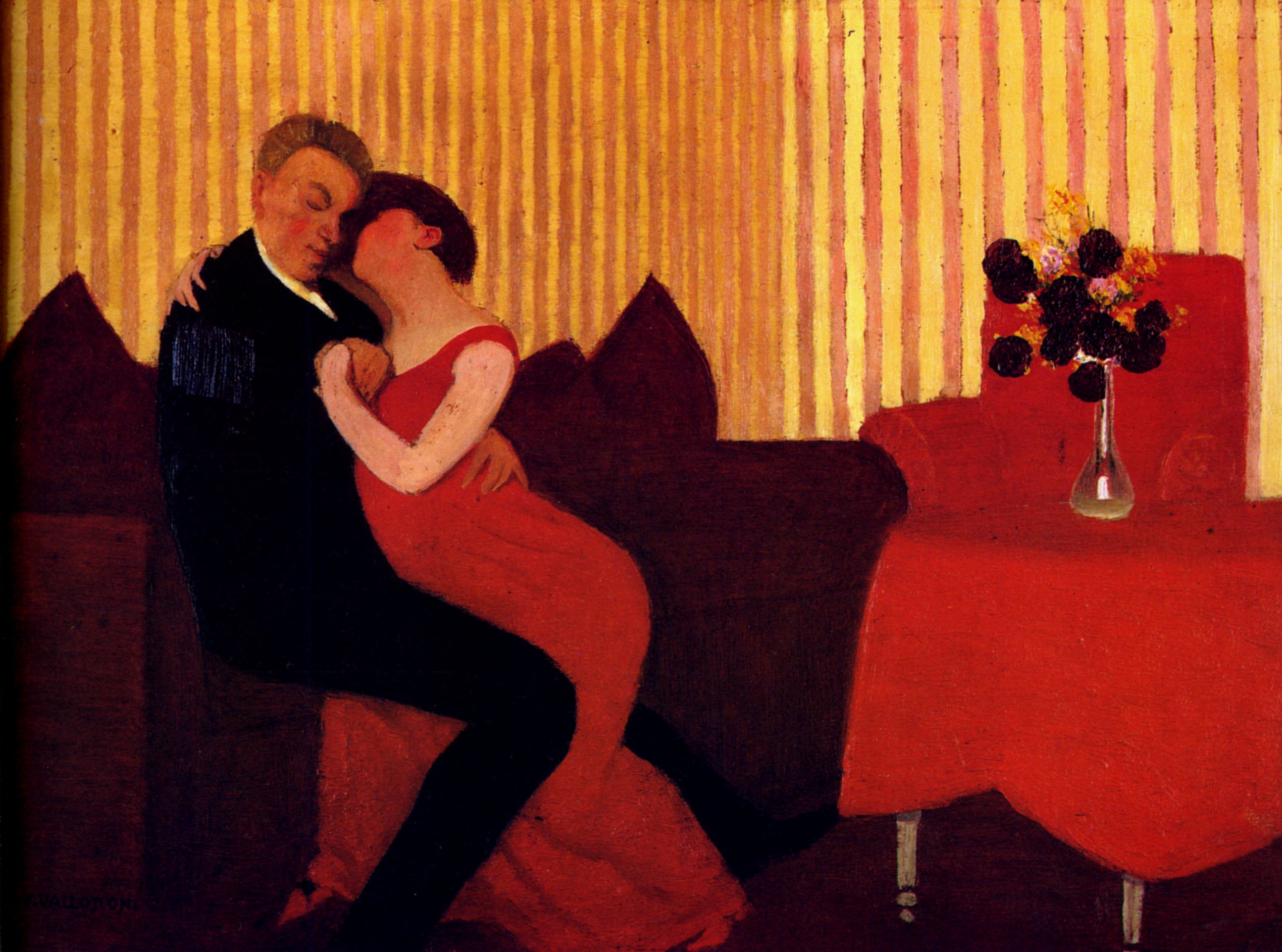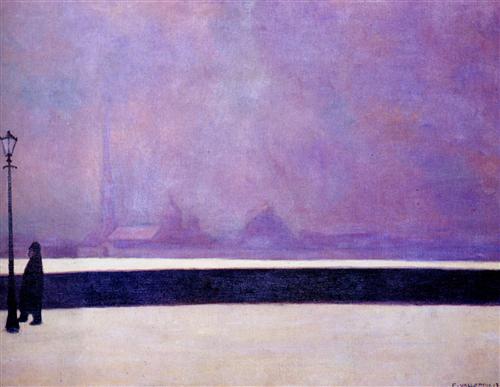"He was there or not there: not there if I didn't see him."- Henry James, The Turn of the Screw
One sees immediately from Felix Vallotton’s paintings that he must had been a gifted raconteur. The painter was possessed of the natural aptitude of unfolding and withholding the narrative flow at the most propitious timing. Mysteriousness emerges. The viewers are bound to be tantalised. Whilst most of Vallotton’s paintings are about the quotidian, the domestic, beneath them their pent-up energy seethes and trembles, threatening to explode at any moment. It isn’t just the quotidian that he depicted, but the interior dramas. Any reader of Ibsen’s or Strindberg’s plays will know that interior drama can be the most frenetic.
A woman leans towards a man, her hand entwines his body in show of sensuousness. She whispers into his ears something that the viewers are forbidden the right to privy to. But one has the eye to deduce, from the slightly wrinkled of the man’s nose and the slightly arched of his eyebrow, that the message she confides to him seems to be one that pricks his annoyance. Or is it? One quickly retracts on his original conjecture. Or could it be that the man is actually smiling, made amused by his lover’s sweet nothings. Or is it rather a hackneyed episode of the deceiver and the deceived, but is the latter always so blind to the trap he is about to fall into? Perhaps not so much as his face intimates his mistrust to the woman’s flattering words. Gradually one grows fretful of so many possible answers to an ever-unsolvable question, especially under the likelihood that not even one of them accurately squares with the painter’s real intention. Therefore, out of sheer frustration, one will declare that a painting like The Lie (1989) is “rather baffling.”
Vallotton died in 1925 and left a total of over 1700 paintings and 200 prints. With such a gross oeuvre it was rather difficult to maintain the consistent quality of each individual work. The tense feeling of emotional suspense in The Lie can stiffen into that of rigid formality in other paintings. Once Vallotton decided to simplify the contours of figures and skimp on the varying use of colours of his palette, the result can be so plausibly namby-pamby. This criticism is, however, not also targeting at those Japonist-inspired landscape paintings. Examples like Sunset (1913), with its compositional simplification, achieves an effect both pleasing and spiritual. An orange-red sun hangs at the centre of the painting. The sunbeam stretches vertically across the ocean, towards the viewers. What can the symbolic meaning be? The presence of God in the form of light? Or it denotes the fateful path every devout believer must embark upon to assume connection with the deities?
Vallotton’s later work, though exhibiting an obvious tendency towards abstraction, boasts the richest and the most suspenseful of dramas in its storytelling. Everything seems to be perfectly normal; nothing seems to be going on, whilst one suspects that something queer is indeed afoot. There is this painting that is dominated almost wholly with a bland, monotonous landscape: snow field, straight avenue, some houses that are hidden behind the heavy mists, a wobbly lamppost, and no more. A man is at the edge of the painting, hastening out of the frame. Going where? One never knows. But one can sense that he might be quite desperate to get out of this place, this deserted town that seems only frequented by the old spirits. Here lies the most ingenious aspect of Vallotton’s creativity: to keep ablaze the fire of intriguing drama even though the subject matter seems to revolve on the most dismal, the most desolate. He never gratified his viewers more than a glimpse of what they were most desirous of. And that is the key to the most masterful of storytelling in art.



Comments
Post a Comment